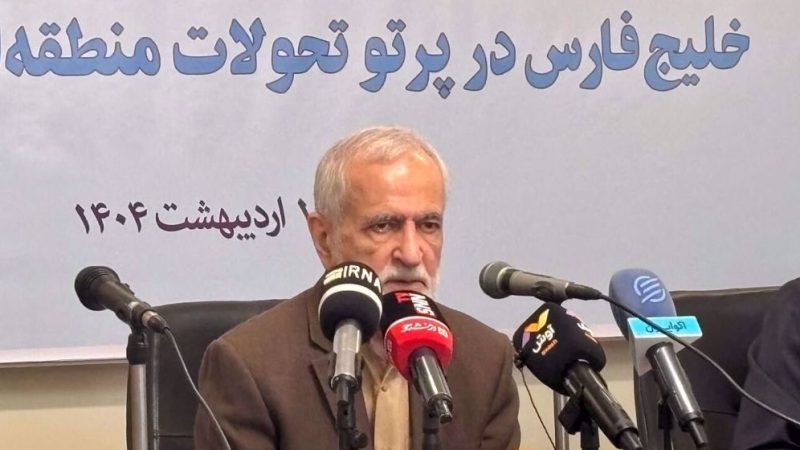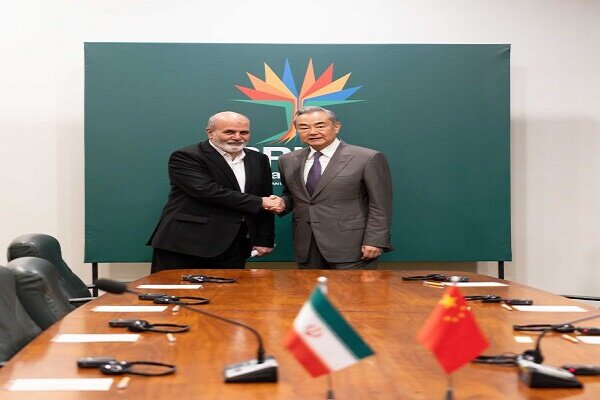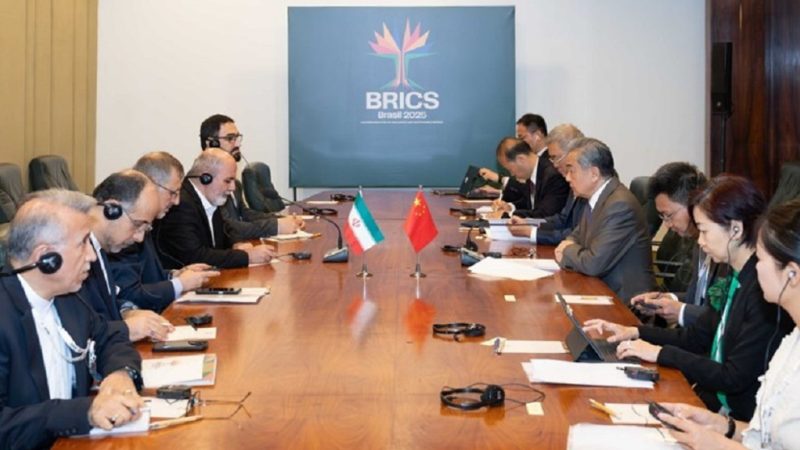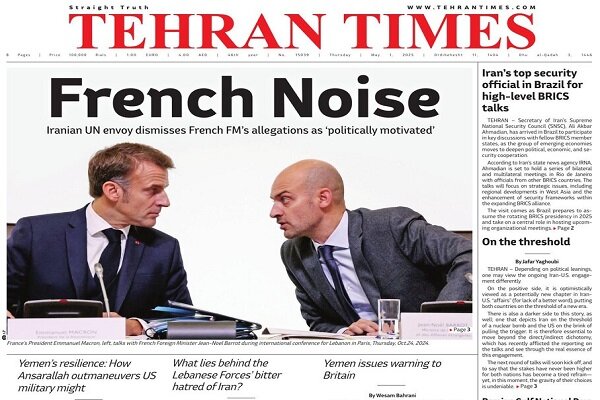Storm reigns: Trump's 100-day sprint marked by bluster and broken pledges
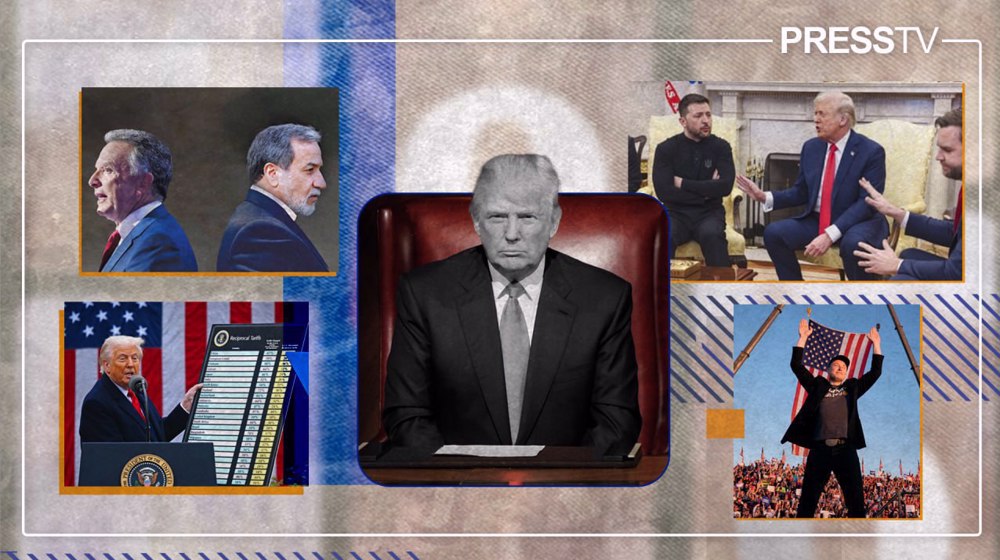
By Mohammad Homaeefar
US President Donald Trump marked the 100th day of his second term on Tuesday, calling it the “most successful” in the history of the country, even as several key domestic and foreign policy pledges remain unfulfilled.
Speaking at a rally in Macomb County, Michigan, Trump touted what he described as major economic gains during his new stint, despite approval ratings plummeting to new lows since his January 20 inauguration.
“We’re here tonight in the heartland of our nation to celebrate the most successful first 100 days of any administration in the history of our country, and that’s according to many, many people,” he said at the beginning of his speech at Macomb Community College.
“This is the best, they say, 100-day start of any president in history, and everyone is saying it. We’ve just gotten started. You haven’t even seen anything yet.”
Reflecting on his first term, which lasted from 2017 to 2021, he said, “We had the greatest economy in the history of our country. We did great, and we’re doing better now.”
According to Gallup, however, Trump is the only post-World War II president in the US to have less than half the public’s support after 100 days in office in both of his terms.
Yet, at the rally, he dismissed opinion polls that showed his popularity has fallen as “fake.”
Trump’s trade war and tariff escalation
One of the defining characteristics of Trump’s 100 days in office has been his aggressive and confrontational trade agenda against friends and foes alike.
Starting on February 1, he imposed sweeping tariffs on Canada, Mexico, and China, and then moved on to target goods imported from the rest of the world.
The tariffs have significantly impacted the US economy and strained relations with key trading partners.
Nevertheless, Trump claimed that the tariffs would help revive domestic manufacturing.
He boasted that leaders from around the world were lining up to meet with him and reach trade deals with the White House.
“Now, we’re respected all over the world,” he said. “They’re coming from all over the world to see your president. They’re coming from India, they’re coming from France, they’re coming from Spain. Yeah, they’re coming from China, too, yeah, they’re coming from China. They’re coming from all over to see your president. They want to make a deal. They want to make a deal. And you know, we’ll make deals, but we don’t have to.”
While Trump asserts that these tariffs will lead to a resurgence in domestic manufacturing, the immediate economic indicators suggest a slowdown in growth, rising inflation, and strained international relations.
On Monday, foreign ministers from the BRICS group of developing nations met in Rio de Janeiro to discuss ways to counter the tariffs and expressed “serious concern at the prospect of a fragmented global economy and the weakening of multilateralism.”
Trump had already attacked the BRICS group, threatening another 100% tariff if the bloc went ahead with a plan to introduce a currency to replace the dollar in trade relations.
While the long-term effects of Trump’s confrontational economic policies remain to be seen, the initial impact has raised concerns among world leaders, economists, and investors alike.
Crackdown on immigration and legal battles
In his campaign-like speech, Trump also touted progress on his immigration crackdown, which has faced a flurry of legal cases.
On his inauguration day, Trump signed Executive Order 14159, titled “Protecting The American People Against Invasion,” which expanded expedited removal procedures, denied federal funding to sanctuary jurisdictions, and increased hiring for immigration enforcement agencies.
“There’s never been such a difference in anything as the difference between the border today and the border what it was just six months ago, so I want to say congratulations, America, it’s about time,” he said.
Trump’s administration also reinstated the “Remain in Mexico” policy, requiring asylum seekers to wait in Mexico while their immigration cases are processed.
Additionally, the refugee resettlement program was suspended for four months to enhance vetting measures.
He also issued an executive order to end birthright citizenship while aiming to reinterpret the 14th Amendment. This move has faced legal challenges, with federal judges issuing preliminary injunctions blocking its implementation.
Border security measures intensified with the establishment of a 170-mile “National Defense Area” along the US-Mexico border in New Mexico, where migrants entering the zone face criminal charges. The administration also expanded the Guantanamo Migrant Operations Center to detain up to 30,000 migrants.
These actions have sparked legal challenges and debates over their constitutionality and impact on civil liberties. Observers say the incumbent administration’s policies infringe on states’ rights and undermine community trust in law enforcement.
Ukraine war: Failed promises and shifting rhetoric
During his campaign, Trump repeatedly claimed he could end the Russia-Ukraine war immediately, though his rhetoric has changed in recent days as he failed to deliver on that promise.
At a CNN town hall in May 2023, he said, “They’re dying, Russians and Ukrainians. I want them to stop dying. And I’ll have that done — I’ll have that done in 24 hours.”
He kept repeating that promise on the campaign trail, but he is now acknowledging that what he said was an “exaggeration” and that it was said “in jest.”
“Well, I said that figuratively, and I said that as an exaggeration, because to make a point,” he told Time magazine last week.
“Obviously, people know that when I said that, it was said in jest, but it was also said that [the war] will be ended.”
Trump had also criticized the scale of US military aid to Ukraine under his predecessor, Joe Biden, promising to reverse that course.
In late February, he had a meeting with Ukrainian President Volodymyr Zelensky, which led to heated exchange between the two leaders in the Oval Office.
Days later, Trump halted all military aid to Ukraine. However, on March 11, US military aid to Ukraine resumed after Ukraine agreed to a potential ceasefire.
After 100 days, as hopes of an end to the war diminish, Trump administration officials now say that the coming week will be “very critical” for determining whether Washington remains involved in talks.
Israeli genocide in Gaza and US role
In West Asia, Trump had pledged to immediately end the Israeli regime’s genocidal war on Gaza and played a role in a phased ceasefire agreement between Israel and the Palestinian resistance movement Hamas that took effect a day before he assumed office.
Optimism about his intentions quickly faded when he spoke of taking control of Gaza and redeveloping it as a real estate venture. “The US will take over the Gaza Strip, and we will do a job with it too,” he stated recently.
The idea drew condemnation across the region over its implications of ethnically cleansing over two million Palestinians from the besieged territory.
He also continued to supply Israel with deadly weapons, including 900kg bombs, and reinforced unwavering US support for the regime.
Although he ordered a 90-day pause on all foreign aid hours after taking office, he not only excluded Israel but also increased US military aid to the occupying regime.
The Gaza ceasefire deal also proved to be short-lived, as Israel resumed its brutal assaults on Gaza on March 18 after it decided to ditch talks to continue the phased agreement.
Since January 20, Israeli forces have killed more than 2,000 people in the Gaza Strip and the occupied West Bank. Since the war began in October 2023, Israeli attacks on Gaza have killed over 52,000 people and wounded nearly 118,000 others, most of them children and women.
Escalating US military campaign in Yemen
Elsewhere in the region, the US has significantly scaled up its military aggression under Trump despite his anti-war pledges.
He intensified US attacks against Yemen with the declared objective of destroying the Ansarullah resistance movement over its anti-Israel operations in the Red Sea.
Since Trump began his second term, the US has conducted over 200 attacks on Yemen, killing hundreds of civilians. He has also re-designated Ansarullah resistance movement as a Foreign Terrorist Organization (FTO).
Yemeni resistance fighters, however, did not retreat. Instead, they retaliated with full might, targeting American warships, particularly the USS Harry S. Truman, and downing the expensive American MQ-9 Reaper drones that violated Yemeni airspace.
Trump recently warned of further escalation should Yemeni operations persist. He lauded US airstrikes—which have killed civilians—as a “tremendous success.”
The Yemeni government, however, dismissed such claims, asserting it has not sustained “even one percent damage” at the military level despite intensified American assaults in support of what it calls the Gaza genocide.
Despite Trump’s threats, Yemeni operations against Israeli and American targets persisted, and Sana’a vowed to continue its retaliatory strikes until the genocidal war and blockade on the country ends.
On Tuesday, Ansarullah warned that over eight million Yemeni fighters stand ready for combat, calling on the US and the West to end their aggression and lift the siege on Gaza, “or else our war against them will intensify and expand.”
Iran policy: From ‘maximum pressure’ to indirect diplomacy
Trump’s Iran policy during his first 100 days in office has been marked by the reinstatement of “maximum pressure” campaign and bellicose military threats.
He first announced the policy in 2018 after unlawfully and unilaterally withdrawing the US from the Joint Comprehensive Plan of Action (JCPOA), commonly known as the Iran nuclear deal.
On February 4, he signed a National Security Presidential Memorandum directing the Treasury and State Departments to intensify sanctions on Iran, aiming yet again to drive oil exports to zero and dismantle its missile capabilities and regional influence.
In a move that underscored contradictions of his approach toward Tehran, Trump sent a letter to Leader of the Islamic Revolution Ayatollah Seyyed Ali Khamenei, expressing willingness to reach a deal, while threatening military action if the deal was not reached.
Iranian officials flatly rejected direct talks under threats of war and sanctions, but expressed readiness for indirect talks.
The two sides entered Oman-mediated indirect talks on April 12 and have so far held three rounds, with the next round slated for Saturday in Rome.
One of Trump’s biggest foreign policy failures during his first term was the same “maximum pressure” campaign against Iran, which did not achieve any of his goals.
But whether he will choose to abandon that failed approach and whether he can—or will—resist Israeli pressure and pursue a genuine diplomatic breakthrough with Iran remains the true test of his second-term Iran policy.


